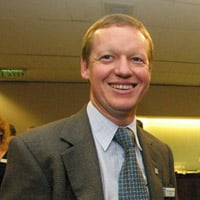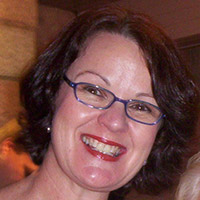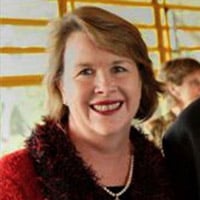About Ultrasound Careers
Careers in Ultrasound
For information on ultrasonography as a career, see below.
The non-physician professionals who perform these procedures are known as sonographers and vascular technologists (who are sonographers specializing in imaging and tests of blood vessels).
There are several areas of specialization in the field of sonography. These specialty areas are:
- Abdomen – evaluation of all the soft tissues, blood vessels and organs of the abdominal cavities (for example, liver, spleen, urinary tract, pancreas)
- Obstetrics/Gynaecology – evaluation of the female reproductive system and assessment of fetus in obstetrics. In Gynaecology assessment of the female reproductive system is carried out in a wide range of conditions including infertility, early pregnancy,uterine,ovarian and tubal disease. In Obstetrics, ultrasound is an integral part of the screening, diagnosis and management of both normal and abnormal pregnancy.
- Echocardiography – evaluation of the anatomy and hemodynamics (blood flow) of the heart, its valves and related blood vessels
- Vascular Technology – evaluation and analysis of the hemodynamics (blood flow) of peripheral and abdominal blood vessels
- Neurosonology – evaluation of the brain and spinal cord
- Ophthalmology – evaluation of the eye, including orbital structures and muscles
- Musculoskeletal – evaluation of injuries to ligaments, tendons and muscles
- Screens – evaluation of the breast, testes, and thyroid
- Intervention – guidance during interventional procedure
WHO
Depending on the specialty and purpose of an ultrasound scan there are several types of qualified persons who can perform an ultrasound in Australia and New Zealand as listed below:
- Sonographers: may obtain images which have value in the diagnosis and management of the patient by the medical team .
- Echocardiographers (cardiac sonographers): sonographers who perform cardiac ultrasound as a specialty.
- Medical practitioners: may perform their own ultrasound study or use the findings of the sonographer to determine appropriate treatment strategies for the patient. Sonographers working in private practice in Australia require an ASAR accredited qualification. In New Zealand sonographers are required to be registered with NZRTB.
WHERE
Ultrasound professionals can choose to work in clinics, hospitals, private practice physician offices, public health facilities, laboratories, and other medical settings performing examinations in their areas of specialisation. Career advancement opportunities exist in education, administration, research, and in commercial companies as education/application specialists, sales representatives, technical advisors, etc.
Sonographers are the healthcare professionals with recognised qualifications in Australia or New Zealand who utilise their technical expertise, knowledge of human anatomy, and the physical principles of ultrasound to produce diagnostic images of the body.
Ultrasound is used to evaluate many parts of the body, including the abdomen, blood vessels, developing fetus, superficial body structures, heart, blood vessels, joints, muscle, and neonatal brains. The sound waves used to obtain these images are at a frequency above the range of human hearing. Sound waves are emitted from the transducer into the body and then return to the ultrasound machine where they are converted into an image. The images are interpreted by a Radiologist who provides the medical diagnosis for the patient’s physician.
Ultrasound is used to enhance treatment and investigate abnormalities in:
- Obstetrics
- Sports medicine
- Liver
- Kidneys
- Gynaecology
Sonographers have extensive, direct patient contact that may include performing some invasive procedures. They must be able to interact compassionately and effectively with people who range from healthy to critically ill.
The professional responsibilities include, but are not limited to:
- Obtaining and recording an accurate patient history
- Performing diagnostic procedures and obtaining diagnostic images
- Analysing technical information
- Using independent judgment in recognising the need to extend the scope of the procedure according to the diagnostic findings
- Providing an oral or written summary of the technical findings to the physician for medical diagnosis
- Providing quality patient care
- Collaborating with physicians and other members of the health care team
- Continual professional development (CPD)
- Patient safety
- Evaluation of equipment
- Quality control
Qualifications recognised in Australia:
- Diploma of Diagnostic Ultrasound (DDU)
- Fellow of the Royal Australian and New Zealand College of Radiologists(FRANZCR)
- Fellow of the Royal Australian and New Zealand Colledge of Obstetricians and Gynaecologists (FRANZCOG)
- Fellow of the Royal Australasian College of Surgeons, Vascular (FRACS)
A recognised qualification for point of care ultrasound is the Certificate in Clinician Performed Ultrasound (CCPU) which is offered by Australasian Society of Ultrasound in Medicine (ASUM).
Option 1:
I am a doctor/medical specialist to whom other medical practitioners refer patients for ultrasound examination and diagnosis. Are there any course(s) at ASUM available to me?
Diploma of Diagnostic Ultrasound (DDU)
Option 2:
I am a student with a bachelor degree in a health related discipline, what course(s) at ASUM are available to me?
Diploma of Medical Ultrasound (DMU) (existing students only)
Option 3:
I am a doctor/medical practitioner who wishes to use ultrasound in the treatment of my own patients. Are there any course(s) at ASUM available to me?
For Sonographers
Sonography is a dynamic profession that has grown significantly over the past 20 years. With rapidly developing new technologies and increased use of diagnostic ultrasound procedures, growth is projected to continue in the future with employment opportunities for qualified sonographers in both urban and rural areas nationwide.
Salaries vary depending on years of experience, number of certifications, and geographic location.
Awards and pay rates
Check with your relevant Government Department of Labour/workplace relation.
For Medical Practitioners
Medical practitioners holding relevant qualifications who perform ultrasound scans will have a broader range of tools and skills to use in the diagnosis and treatment of their own patients.
For Medical Specialists
Medical specialists who hold a recognised qualification will enable other medical practitioners to refer patients to them with confidence, knowing that they have the specialist skills to diagnose patients from ultrasound.
Qualification recognition
To get your degree formally recognised as equivalent to Australian 3 year bachelor degree.
Please see www.industry.gov.au for details on recognition.
Working and studying in Australia
- For professionals and other skilled workers seeking work or business in Australia, and
- For people studying or seeking study, training, or skills development in Australia
Please see www.border.gov.au for details on working in Australia.
Testimonials
Mr Stephen Bird – DMU Testimonial
Choosing a future career when you are still in high school is a daunting task. I remember very well the day I decided to peruse medical radiations as a career choice. The decision was based on my interest in health and photography and had little to do with sonography or ultrasound as I was unaware of the sonography career pathway at the time. Sometimes in life you fall on your feet and my decision to study medical radiations in Adelaide was one of those moments, as unbeknown to me at the time I had just opened the door to my ultrasound imaging future. During my undergraduate degree I was introduced to sonography as part of my clinical practice experience and rapidly developed a love for the modality. Once I completed my undergraduate degree I immediately began study for the ASUM General DMU. The self directed learning structure of the DMU suited me as a student and allowed me to continue full time employment while studying and sitting the various DMU exams. Once I completed my ultrasound qualifications I made the move from a career in medical radiations to dedicated sonography so that I could devote my professional time to gaining skills in the vast array of applications ultrasound has developed.
A career in sonography commits you to life long learning as the technology and applications of ultrasound continue to march forward at an increasing pace. Journal reading, conference participation and personal professional development are an integral part of the profession ensuring a career where you will never become complacent.
The challenges which face a sonographer on a daily basis are many and varied. As a sonographer you are not just responsible for producing a diagnostic image, but of interpreting it also. Close patient contact, history taking, equipment optimization and problem solving skills are required for every examination. Sonography is a job of detective work with each patient presenting with a unique clinical question that requires a solution from the scan.
My career in sonography has provided me with a job which I enjoy with great passion. It has provided me with opportunities to be involved in professional association and government authorities to develop guidelines and legislation which ensures the Australian public receive high quality ultrasound services provided by an appropriately qualified sonography workforce. It has also provided me with the opportunity to become involved in education of other health professionals through professional associations ASMI and the Australian university system.
Sonographers continue to be highly sought after in the diagnostic imaging health care system as the demand for ultrasound services continues to increase, driven by technological developments and an Australian population with increasing health care needs. This ensures employment opportunities are very strong for sonographers in Australia and overseas. Australian sonographers are highly sought after overseas due to our high standards of education and credentialing and hence sonography is the ideal career for anyone wishing to travel and work overseas. It is also a career which lends itself to job flexibility and part time work which makes the career ideal if you wish to split your time between family and professional commitments.
I would recommend a career in sonography to anyone who has an underlying passion to improve the health of others. Interpersonal skills and a genuine and natural empathy for patients going through difficult situations are essential, as is the ability to retain a broad range of technical and medical knowledge. If you think you can combine these attributes with the hand eye coordination and minor motor skills required to perform the job it may be just what you are looking for.
Dr Lucia Pemble – DMU Testimonial
My career as a vascular sonographer has been an interesting and dynamic process. I started with a Science degree majoring in human physiology and working as a clinical physiologist performing non-invasive diagnostic examinations on patients with respiratory, cardiac, vascular and sleep disorders. With the rapid growth in demand for these services and advances in technology I then specialised in cardiac and vascular non-invasive diagnosis, of which duplex ultrasound is a major tool.
Wanting a qualification in ultrasound I enrolled in the ASUM DMU and obtained a vascular DMU. With the DMU, my years of clinical experience, first class honours in physiology and a passion for research I applied to the Queensland University of Technology to be admitted to do a PhD in vascular ultrasound and won a scholarship to study full-time. During my PhD I continued to work part-time as a vascular sonographer and started teaching in post-graduate ultrasound programs.
Since completing my PhD I have taken opportunities as they have presented and have worked in public hospitals, private radiology practices and small vascular surgeon based practices. I have been fortunate to continue my passion of teaching ultrasound at a tertiary level at Griffith University, for ASUM and other ultrasound educational bodies.
I am a Senior Lecturer at Griffith University and have research interests in vascular ultrasound and work integrated learning. I enjoy being involved in this evolving and dynamic, multidisciplinary profession academically, clinically and as a volunteer in various different positions. Over the years I have held positions on the ASUM sonographer affairs committee, the DMU board of examiners and ASUM council. The opportunity to serve in these positions with other enthusiastic, dedicated professionals is rewarding and fosters collaboration, networking and personal growth.
I would recommend sonography as a career and participation in your professional body as a truly worthwhile and fulfilling experience.
Mrs Margo Gill – DMU Testimonial
Thinking of a career in sonography? What a great idea!
If you are thinking about a career as a sonographer you would be joining many people, including me, who have had a very interesting, varied, flexible and rewarding career that allows you to work with a wide range of people and fantastic technology. I started my involvement with ultrasound from being a Medical Imaging Technologist (Radiographer) first, then progressing to learn ultrasound in the quite early days of ultrasound applications, then gaining my ultrasound qualification (DMU awarded by ASUM) and after a time specialising in ultrasound. My interest in ultrasound then led me to a position as an academic in the early days of sonographer education being undertaken in universities as postgraduate studies.
My time as an academic sonographer for 13 years at QUT in Brisbane, and then a shorter period at the University of Sydney, has been the major highlight of my career as I was involved with the teaching and development of so many wonderful people who had chosen to become sonographers, many of whom have since gone on to be great teachers and leaders in the profession. I also had the opportunity to work with many others who were dedicated to teaching, research and being actively involved in the positive development of sonography as a profession. I was very fortunate to be able to undertake research and go on to a Master of Applied Science by research degree and a Master of Business Administration (MBA) both of which allowed me to develop fantastic skills which I’ve been able to apply in many areas of my career.
Alongside my work in the university sector, I was also fortunate to be actively engaged with the Australasian Society for Ultrasound in Medicine (ASUM) and much of the great work that ASUM does in education, encouraging research, setting and maintaining professional standards and providing alternative pathways for achieving recognised qualifications via the DMU, DDU and CCPU processes.
Although I am no longer engaged in clinical sonography I remain actively in touch with the profession through on-going involvement with ASUM, the universities and mentoring of colleagues and younger sonographers. To me the greatest thing about a career in sonography is its flexibility, which allows you to tailor your career to your interests and lifestyle circumstances. You can be as actively involved with the development of your own career and the profession as you wish through so many and varied opportunities.





